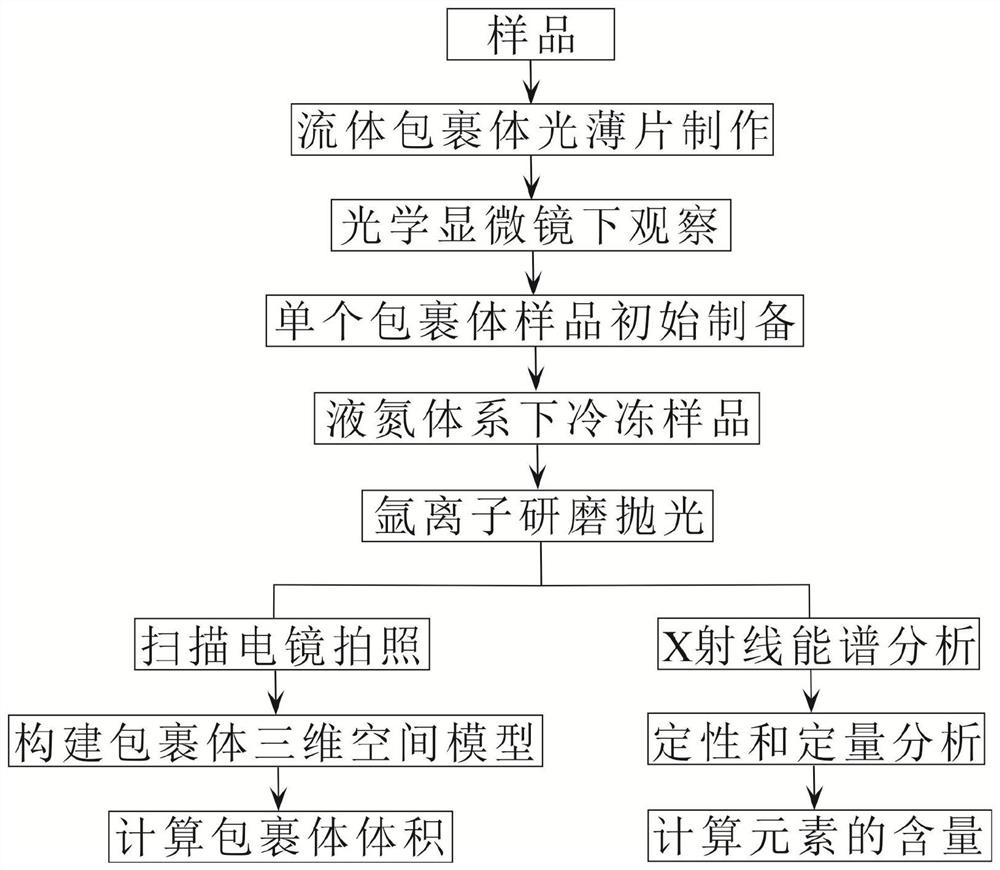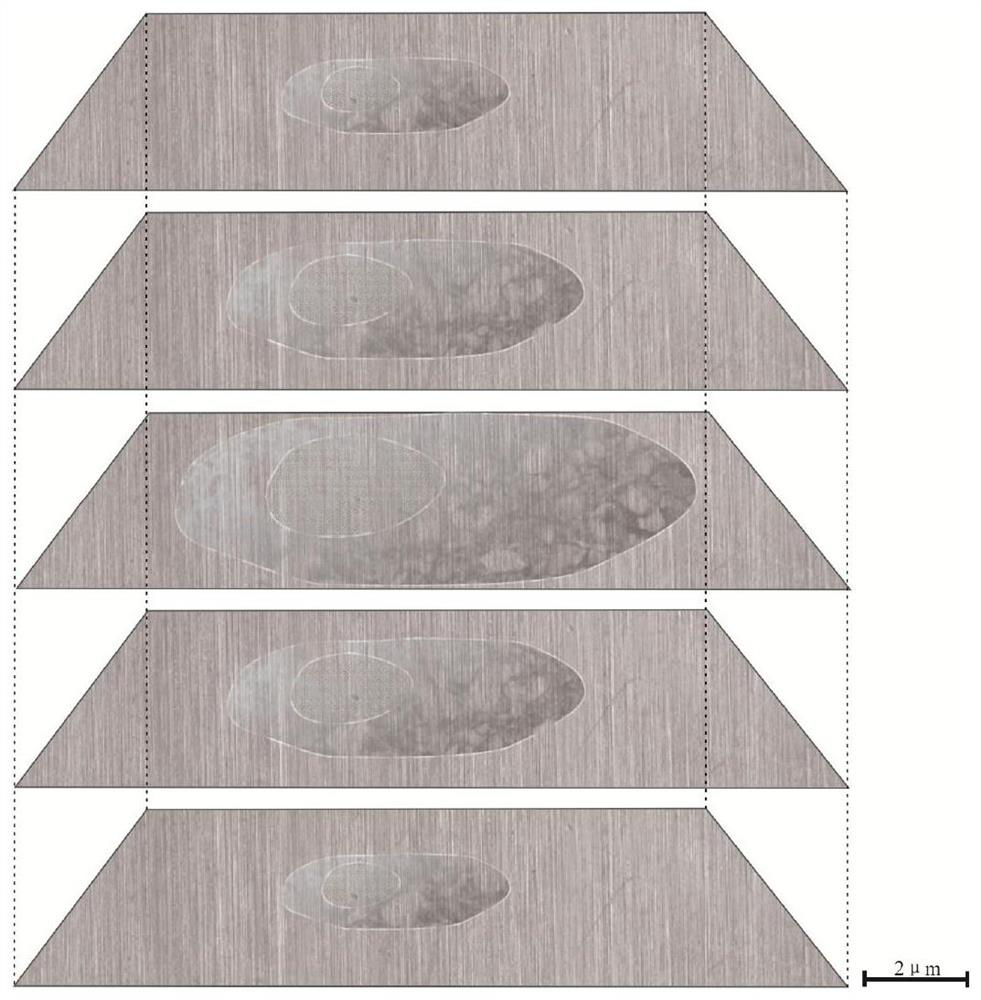Fluid inclusion gas-liquid ratio and sub-mineral determination method
A technology of fluid inclusions and determination method, which is applied in the field of fluid inclusion analysis, can solve the problems of falling off of sub-minerals, difficult to identify, and difficult to accurately obtain gas-liquid ratio, etc., and achieves the effect of good application prospects.
- Summary
- Abstract
- Description
- Claims
- Application Information
AI Technical Summary
Problems solved by technology
Method used
Image
Examples
Embodiment
[0033] The samples for this experiment were collected from a drill hole in a copper mining area in Tibet, and they are fresh and unweathered copper ore samples in the hydrothermal mineralization stage. The specific implementation steps are as follows:
[0034] Step 1: Rock sample preparation
[0035]The two sides of the fluid inclusions of the rock samples were polished and lightly sliced to make inclusion sheets with a size of 40mm*20mm and a thickness of 0.1-0.3mm.
[0036] Step 2: Observing fluid inclusions under an optical microscope
[0037] Observe the flakes under a microscope to find individual fluid inclusions as close as possible to the sample surface and mark their location with a black oil marker.
[0038] Step 3: Initial preparation of fluid inclusion samples
[0039] Using an ordinary cutting machine, cut the sample into samples with a size of 0.5*0.5mm and a thickness of 0.03mm, and stick them directly on a copper disc with a diameter of 3mm. The surface o...
PUM
| Property | Measurement | Unit |
|---|---|---|
| thickness | aaaaa | aaaaa |
Abstract
Description
Claims
Application Information
 Login to View More
Login to View More - R&D
- Intellectual Property
- Life Sciences
- Materials
- Tech Scout
- Unparalleled Data Quality
- Higher Quality Content
- 60% Fewer Hallucinations
Browse by: Latest US Patents, China's latest patents, Technical Efficacy Thesaurus, Application Domain, Technology Topic, Popular Technical Reports.
© 2025 PatSnap. All rights reserved.Legal|Privacy policy|Modern Slavery Act Transparency Statement|Sitemap|About US| Contact US: help@patsnap.com


